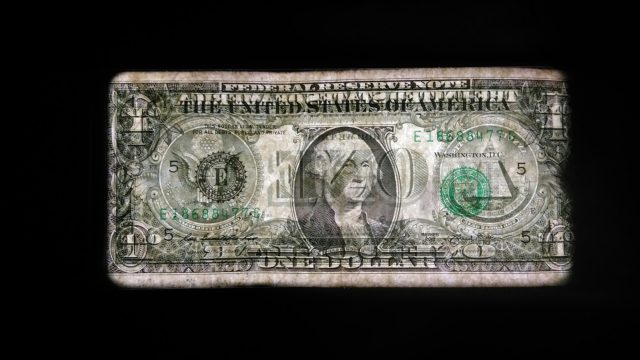
Businesses and governments are rushing to join the crusade for Natural Capital. Should we cheer them on or is some thoughtful cynicism required?
The Green Economy Coalition recently published ‘The Wealth of Nature’, a paper which accepts the Natural Capital proposition but argues for improvement in the valuation of nature lest we destroy it, and calls for a world where business knows the price of the damage they cause and governments can balance preservation against demands for economic growth.
It is a call for better data, but within a financialised natural world where nature has a price tag. Is this our best hope in a world where accountants argue about how to measure business profits, where transfer pricing is often fraudulent, where forecast shareholder value is anyone’s guess? Is a world where everything has a price an illusion?
Pricing in the eye of the beholder
The philosopher Michael Sandel warned about the dangers inherent in pricing everything; that markets have a moral limit. The trouble is that humans appear to respond best to numbers, whether to GDP or wages, with numerism now the common language, our existence considered a game of sums.
Pricing works where many of the same item and large numbers of buyers exist so that prices can be fixed by supply and demand variables and regular price fluctuations.
“ A cynic knows the price of everything and the value of nothing.”
Pricing is weakest where there are insufficient numbers of buyers and/or sellers or where the item being priced is unique or intangible. For a work of art, this does not matter too much. A da Vinci selling for $450m hurts no one except the wealthy buyer should the price collapse overnight.
Valuing quality
Large, individual projects utilize cost-benefit analysis to inform decisions. Costs are forecast for each part of a project along with ‘assumed’ benefits. The HS2 rail project, a plan to improved links between and the north of England, is one example. Its cost estimate in 2010 was £32bn and is now over £50bn, with perceived benefits over 60 years (!) originally estimated at £50bn. Such project costings are hugely variable. Frank Ackerman, an environmental economist, described in an excellent paper for Friends of the Earth, six major flaws with cost-benefit analysis:
- Pricing the priceless
- Troubling Trade-offs
- Uncertainty and Precaution
- Distorting the Future
- Exaggerated costs
- Partisans and Technicalities
The paper warns against the simplistic tendency of cost-benefit analysis, with its atomistic view of a world of numerical opinions, to easily slant towards the desired answer. An alternative is the precautionary approach of Nassim Nicholas Taleb’s antifragility proposition, which requires scientific rigour before action is taken that might harm the public domain. This is crucial as the inclusion of natural phenomena and the qualitative benefits that accrue from them into a simplistic numbers game is a tremendous risk, where we hurtle towards some valuation methodology because pricing is the easiest response! How do we consider the ability of the valuers - those who make the key assumptions that drive the computations, possibly working backwards from desired outcomes or just inadequate in their judgements?
Large projects typically overrun by two to three times in cost and timescale. If basic projects cannot be properly valued, how difficult is it to put a price on our ‘natural capital’? Computing is not the issue – it is our ability to ask the right questions, to set the right assumptions, to reason on a qualitative basis.
Business vs Society
The sectors involved in developing natural capital accounting approach this from different directions. The private sector, large companies with long-term sustainability concerns, evaluate their impact on the environment to ensure long-term survivability and match the changing needs of customers. Natural Capital uses the basic accounting language of business, influencing decisions internally and externally for such microeconomic enterprises.
Quantity versus Quality
Outside business, the requirement is macroeconomic not microeconomic and the societal problems are fundamentally different. These are quality of life issues beyond the quantity of goods and services that we buy: such as air to breathe and a sustainable climate, forests and landscapes that have beauty, rather than income generation via tourism.
Government is our representative, tasked with managing our natural capital to our mutual benefit, using macroeconomic and qualitative judgement. Does Government understand that this goes beyond individual business sustainability to how quality of life is sustainable for all of its citizens, where the environmental impact of business misuse is not just an “externality” that needs to be costed into microeconomic business decisions? After all, these so-called ‘externalities’ are central to our very existence.
For business, ‘natural capital’ has meaning; for society, financialisation of the natural world has much less. We risk potentially drowning in a world of endless cost-benefit analysis.
Jeff Kaye is the former Director of anti-corruption NGO Global Witness, and was the Chair of Future Brilliance. Following a successful career as CEO / MD of several IT, aerospace, defence and energy firms, he is now a Trustee to Transparency International UK.
References:
The Wealth of Nature, INET, GEC, SSEE (2017)
Michael Sandel: What Money Can't Buy: The Moral Limits of Markets (2012)
Frank Ackerman: ‘Critique of Cost-Benefit Analysis, and Alternative Approaches to Decision-Making’ (2008)
Nicholas Taleb et al: ‘The Precautionary Principle’ 2014
Photo by Matthew Henry on Unsplash


